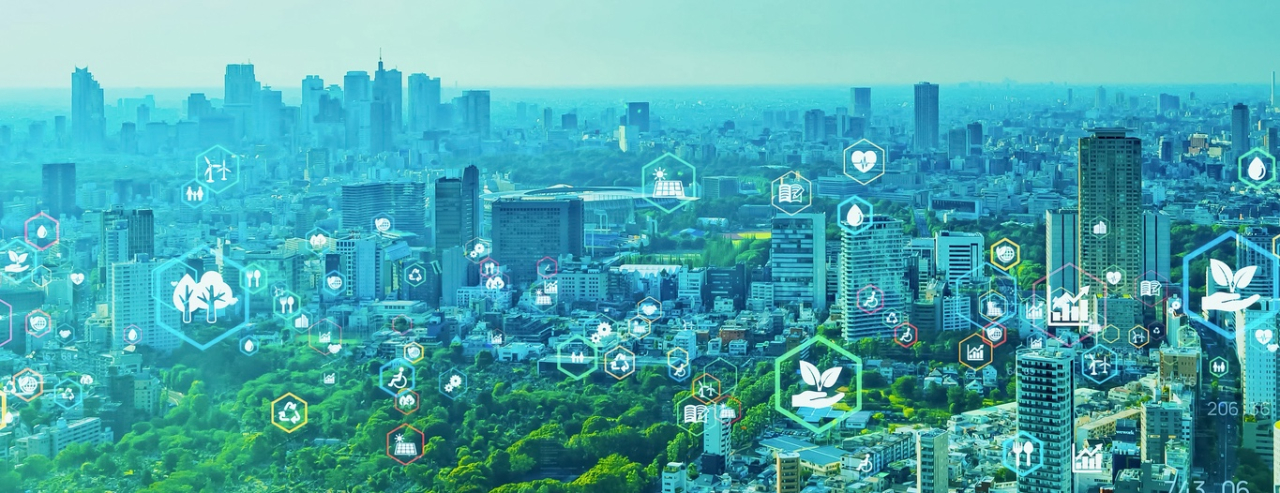Reducing your website's carbon footprint

In today's world, where sustainability is paramount, every action counts. As we strive to reduce our carbon footprint, it's essential to consider the impact of our digital activities. This blog post aims to inspire and empower businesses to take proactive steps in reducing their website's environmental impact, highlighting the technical challenges and the incredible benefits that come with it.
The hidden impact of digital usage
Most people are aware of the environmental impact of their daily activities, from reducing travel using fossil fuels, to minimising plastic use and conserving water. However, digital usage often escapes this conversation. It's surprising to learn that the energy consumed by the technology industry is comparable to global aviation. Reducing digital consumption isn't often mentioned alongside not flying, but it's just as crucial. In fact, some estimates predict that the carbon footprint of our gadgets, the internet and the systems supporting them account for roughly 3.7% of global greenhouse emissions.
The challenge of sustainable websites
For businesses, their website is likely the biggest digital consumer of carbon. Reducing its environmental impact can be challenging, but it's a necessary step towards sustainability. Technical considerations, design choices, target audiences, and service providers all play a role in this endeavour.
Overcoming technical challenges
When optimising a website for search, performance, or customer experience, the solutions often revolve around the same core principles. Writing clean, well-structured code and prioritising fast delivery usually meet the requirements of most standards. The same can be said for optimising energy usage.
Efficient coding practices
Writing clean and efficient code is essential to reduce the energy consumption of servers. This includes optimising business logic, minimising the use of heavy libraries and third-party providers, and ensuring that the code runs efficiently on various devices.
Green optimised hosting solutions
Choosing the right hosting provider can significantly impact a website's carbon footprint. Opt for providers using renewable energy sources and energy-efficient data centres.
Content delivery networks (CDNs) are an easy choice that can reduce server load and improve performance, but remember that adding global edge locations increases infrastructure usage and therefore the overall energy consumption of the website.
Green design principles
Designing a website with sustainability in mind involves using minimalistic design elements and considering colour choices. OLED displays are naturally more energy-efficient than older CRT or LCD displays, and displaying darker colours on them is more efficient. However, accessibility should take precedence over small energy-saving wins.
Image and media optimisation
High-resolution images and videos are visually impactful and form part of what customers expect to experience but they also consume a lot of bandwidth and energy. Techniques like lazy loading, file compression, and using modern image formats like WebP can reduce environmental impact and improve performance, especially on unstable mobile networks.
Data management
Fast page response times are crucial for sustainability goals. A fast Time to First Byte (TTFB) not only boosts customer engagement, but helps optimise server energy usage by reducing the work required to build web pages on each request.
TTFB can be thought of as the amount of work the server is doing to build your web page on each request. This work could be parsing the website’s code base, performing database queries, manipulating images and actioning business logic. The more this process is optimised this the less energy the server will expend delivering the page to the browser.
The benefits of a sustainable website
Investing in a more energy-efficient website or optimising your current one can result in tangible benefits for your business.
Enhanced brand image
With consumers becoming more environmentally conscious, demonstrating a commitment to sustainability can enhance your brand image and attract sustainability-focused customers.
Cost savings
Optimising website performance and reducing energy consumption can lead to cost savings on hosting and bandwidth expenses. Efficient coding practices and optimising visual assets can reduce the need for expensive server resources.
Improved customer experience
A website that loads quickly across all devices and networks provides a far better customer experience. Customers expect fast interactions, leading to higher engagement, lower bounce rates, and increased conversions.
Compliance with regulations
As governments and regulatory bodies increasingly focus on sustainability, having a website with a lower carbon footprint can help you comply with environmental regulations.
Long-term sustainability
Building a website with sustainability in mind ensures it remains efficient and environmentally friendly in the long term. Iterative changes and improvements over time mean your online presence has a longer lifespan while keeping up with technical changes and best practices.
Transparency
After launching our new website we made a concerted effort to improve its energy efficiency and currently outperform 58% of tested pages globally. Each load of the home page generates 0.4g of CO2 and 30kWh each year - that’s enough to power an electric vehicle 194km.
We’re proud of what we have achieved, but we still have work to do.
Conclusion
Reducing the energy consumption of your website is an ongoing process and a balancing act between customer experience and sustainability. Achieving a truly green website while successfully communicating your brand and meeting customer expectations is challenging. By being aware of the impact and acknowledging the challenge, you're already taking a significant step towards a sustainable future.